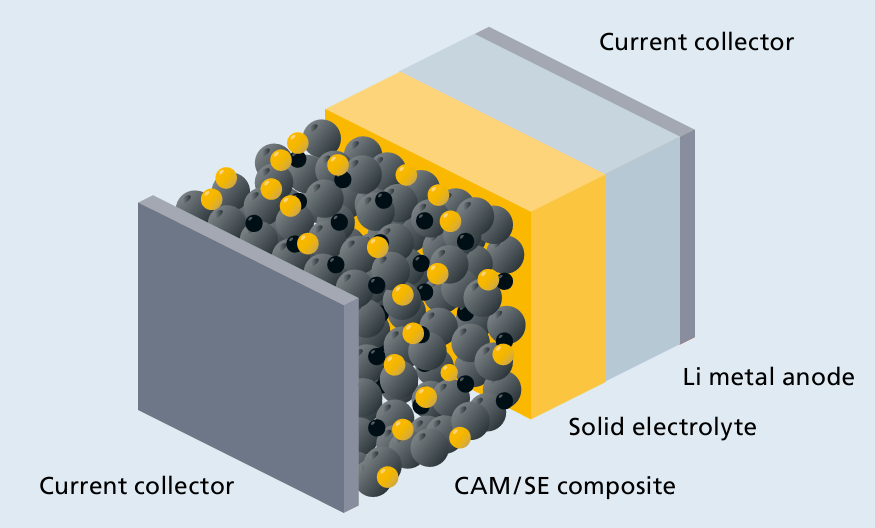FiCS Coalition for Global Energy Transition Launches at COP30 – CAF -banco

Report on CAF Initiatives in Ecuador to Advance Sustainable Development Goals
Introduction
A high-level event was convened in Quito by CAF – Development Bank of Latin America and the Caribbean – to launch two significant initiatives and formalize a technical cooperation agreement. These actions are strategically aligned with the 2030 Agenda for Sustainable Development, focusing on fostering economic growth, innovation, and partnerships. The event featured the participation of Sergio Díaz-Granados, Executive President of CAF, alongside Ecuadorian government ministers and private sector leaders, underscoring a collective commitment to advancing the Sustainable Development Goals (SDGs).
Strategic Initiatives for SDG Alignment
II International Economic Forum and Business Roundtable 2026: A Platform for SDG 17
CAF announced the launch of the II International Economic Forum and the Latin America and the Caribbean 2026 Business Roundtable, scheduled for January 28-30 in Panama City. This platform is designed to directly support SDG 17: Partnerships for the Goals by creating a space for regional cooperation and public-private dialogue. The forum’s objectives are intrinsically linked to multiple SDGs:
- Strengthening Public-Private Articulation: Fostering effective partnerships (SDG 17.17) to mobilize resources and expertise for sustainable development projects.
- Promoting Sustainable Investments: Driving capital towards the modernization of infrastructure, in line with SDG 9: Industry, Innovation and Infrastructure.
- Advancing Coordinated Transitions: Facilitating progress on the green, digital, and energy transitions, which are critical for achieving SDG 7 (Affordable and Clean Energy), SDG 9, and SDG 13 (Climate Action).
- Enhancing Global Trade Integration: The Business Roundtable component aims to connect the region’s exportable supply with global demand, contributing to SDG 8 (Decent Work and Economic Growth) by strengthening trade and strategic alliances.
Technical Cooperation for a New Competitiveness Policy: Targeting SDG 8 and SDG 9
A central outcome of the event was the signing of a non-reimbursable technical cooperation agreement titled “Towards a New Competitiveness Policy for Ecuador.” This agreement represents a targeted investment in the foundational elements required to achieve long-term, sustainable economic progress.
- Financial Commitment: CAF will provide USD 450,000 to support the design of a comprehensive national strategy.
- Core Objective: The primary goal is to enhance the productivity and competitiveness of Ecuador’s productive sector, directly addressing targets within SDG 8, such as achieving higher levels of economic productivity through diversification and technological upgrading (Target 8.2).
- Implementation Framework: The resources will be managed by the Ministry of Production, Foreign Trade and Investment to build technical capacity for the formulation of effective public policies.
- Anticipated Outcomes for Sustainable Development:
- Establishment of a clear roadmap for modernizing the productive sector, focusing on technification and innovative investment, which supports SDG 9.
- Creation of a resilient public policy framework that promotes sustained growth and the integration of value-added products into global chains, reinforcing both SDG 8 and SDG 17.
Conclusion
The initiatives launched by CAF in Ecuador constitute a robust framework for accelerating progress on the Sustainable Development Goals. By combining a high-level platform for international dialogue (the Forum) with a targeted, country-level policy intervention (the Technical Cooperation), CAF and the Government of Ecuador are actively building the partnerships and institutional capacity necessary for a more productive, competitive, and sustainable economic future. These efforts are pivotal for advancing SDG 8, SDG 9, and SDG 17 in the region.
Analysis of Sustainable Development Goals in the Article
1. Which SDGs are addressed or connected to the issues highlighted in the article?
-
SDG 8: Decent Work and Economic Growth
- The article focuses heavily on improving Ecuador’s economic performance through a new “national competitiveness policy.” It discusses enhancing “productive development,” achieving “sustained growth,” and boosting the “productivity and competitiveness of the productive sector,” all of which are central to SDG 8’s aim of promoting sustained, inclusive, and sustainable economic growth.
-
SDG 9: Industry, Innovation and Infrastructure
- The initiative described aims to build a “modern and resilient productive sector” through “technification, innovative investment,” and the “modernization of infrastructure.” The technical cooperation agreement is designed to support the formulation of public policies that foster innovation and upgrade industrial capabilities, directly aligning with the goals of SDG 9.
-
SDG 17: Partnerships for the Goals
- The entire article is a testament to SDG 17. It describes a multi-stakeholder collaboration involving CAF (a regional development bank), the Ecuadorian government (Ministries of Economy and Production), and the private sector (“key trade and business leaders”). The International Economic Forum and the technical cooperation agreement are concrete examples of “public-private articulation” and partnerships to achieve development goals.
2. What specific targets under those SDGs can be identified based on the article’s content?
-
Under SDG 8:
- Target 8.2: “Achieve higher levels of economic productivity through diversification, technological upgrading and innovation…” The article directly supports this target by describing the goal of the cooperation agreement as designing a “comprehensive strategy to improve the productivity and competitiveness of the productive sector” and focusing on “technification, innovative investment and the insertion of our value-added products in the global chain.”
-
Under SDG 9:
- Target 9.2: “Promote inclusive and sustainable industrialization…” The article’s emphasis on creating a “modern and resilient productive sector” and designing a “Public Competitiveness Policy for Ecuador” is a direct effort to promote and strengthen the country’s industrial base.
- Target 9.a: “Facilitate sustainable and resilient infrastructure development in developing countries through enhanced financial, technological and technical support…” The non-reimbursable technical cooperation from CAF is a clear example of providing financial and technical support to help Ecuador formulate policies for development.
-
Under SDG 17:
- Target 17.3: “Mobilize additional financial resources for developing countries from multiple sources.” The USD 450,000 provided by CAF is a direct mobilization of financial resources for Ecuador’s development.
- Target 17.9: “Enhance international support for implementing effective and targeted capacity-building in developing countries…” The agreement’s objective to “generate technical capacities for the formulation of effective public policies” is a direct form of capacity-building.
- Target 17.17: “Encourage and promote effective public, public-private and civil society partnerships…” The article highlights the importance of “public-private articulation” and describes the forum and the agreement as mechanisms for “strengthening of public-private partnerships.”
3. Are there any indicators mentioned or implied in the article that can be used to measure progress towards the identified targets?
-
Explicit Indicators:
- Indicator 9.a.1 / 17.3.1: The article explicitly mentions the financial contribution for technical cooperation: “in the amount of USD 450,000.” This figure serves as a direct measure of “Total official international support… to infrastructure” (related to policy-making infrastructure) and “Additional financial resources mobilized for developing countries.”
-
Implied Indicators:
- For Target 8.2: The article implies that progress will be measured by the successful “design of a Public Competitiveness Policy for Ecuador” and, subsequently, the “insertion of… value-added products in the global chain.” An increase in the export of value-added goods would be a key performance indicator.
- For Target 17.17: The “signing of the non-reimbursable technical cooperation agreement” itself is an indicator of a functioning partnership. The successful execution of the “International Economic Forum and the Latin America and the Caribbean 2026 Business Roundtable” would be another indicator of progress in fostering multi-stakeholder partnerships.
Summary of SDGs, Targets, and Indicators
| SDGs | Targets | Indicators |
|---|---|---|
| SDG 8: Decent Work and Economic Growth | Target 8.2: Achieve higher levels of economic productivity through diversification, technological upgrading and innovation. | Implied: Successful design of a national competitiveness policy; increased insertion of value-added products in the global chain. |
| SDG 9: Industry, Innovation and Infrastructure | Target 9.a: Facilitate sustainable and resilient infrastructure development through enhanced financial and technical support. | Explicit: USD 450,000 in non-reimbursable technical cooperation provided by CAF. |
| SDG 17: Partnerships for the Goals | Target 17.3: Mobilize additional financial resources for developing countries. Target 17.9: Enhance international support for capacity-building. Target 17.17: Encourage effective public-private partnerships. |
Explicit: USD 450,000 in financial resources mobilized. Implied: The signing of the technical cooperation agreement as evidence of a partnership; generation of technical capacities for policy formulation. |
Source: caf.com
What is Your Reaction?
 Like
0
Like
0
 Dislike
0
Dislike
0
 Love
0
Love
0
 Funny
0
Funny
0
 Angry
0
Angry
0
 Sad
0
Sad
0
 Wow
0
Wow
0


















































.jpg.webp?itok=0ZsAnae9#)





/environment-climate-change-and-health-(ech)/water-sanitation-hygiene-and-health-(wsh)/landfill-tuvalu-36092.tmb-1200v.jpg?sfvrsn=5c21fe40_1#)

















